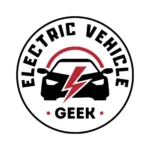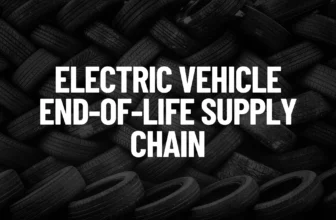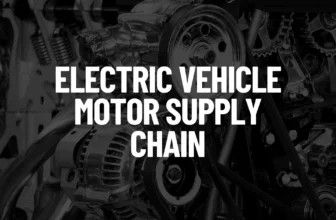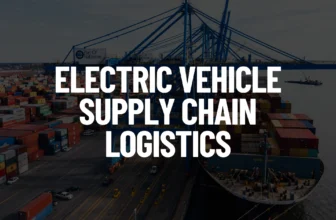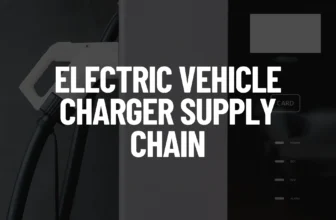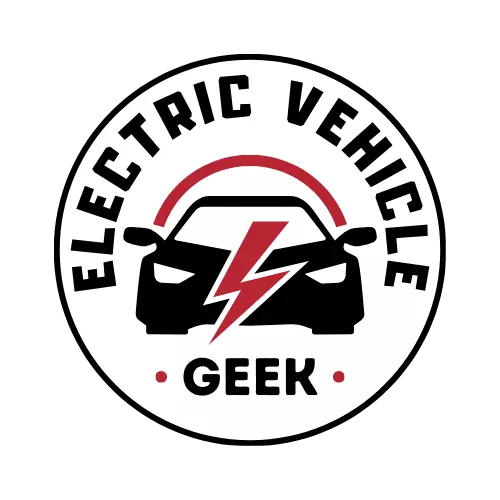The Electric Vehicle supply chain ecosystem is a complex and multifaceted network that encompasses various sub-supply chain processes and stakeholders involved in the entire electric vehicle supply chain, from the sourcing of raw materials to end-of-life management.
This ecosystem is crucial for driving innovation and sustainability in transportation, reflecting the global shift towards more eco-friendly mobility solutions.
Here’s a breakdown of the key components and characteristics of the EV supply chain ecosystem:
Table of Contents
- Scope of the EV Supply Chain Ecosystem
-
Key Sub-Supply Chains in the EV Supply Chain Ecosystem
- Electric Vehicle Raw Materials Supply Chain
- Electric Vehicle Battery Supply Chain
- Lithium-Ion Battery Supply Chain
- Electric Vehicle Semiconductor Supply Chain
- Electric Vehicle Thermal Equipment Supply Chain
- Electric Vehicle Assembly Supply Chain
- Electric Vehicle Motor Supply Chain
- Electric Vehicle Software Supply Chain
- Electric Vehicle Charger Supply Chain
- Electric Vehicle Logistics Supply Chain
- Electric Vehicle End-of-Life and Recycling Supply Chain
-
Key Sub-Supply Chains in the EV Supply Chain Ecosystem
- The scale of the EV Supply Chain Ecosystem
- Key Factors Affecting the EV Supply Chain Ecosystem
- Market Dynamics and Supplier Roles in the EV Supply Chain Ecosystem
- Impact of AI and Technology in the EV Supply Chain Ecosystem
- Research and Development in the EV Supply Chain Ecosystem
- Conclusions
Scope of the EV Supply Chain Ecosystem
The electric vehicle supply chain ecosystem includes all electric vehicle supply chain stakeholders involved in producing, distributing, and maintaining EV parts, components, software, and logistics. This comprehensive network encompasses manufacturers, suppliers, distributors, logistics providers, software developers, charging infrastructure operators, and aftermarket service providers. Each stakeholder plays a crucial role in ensuring the seamless integration of technologies, efficient transportation of goods, and the delivery of reliable EV solutions to end-users.
The electric vehicle (EV) supply chain ecosystem is a dynamic and interconnected network comprising primary and sub-supply chains, each dedicated to specialized components, products, or services. These nested sub-supply chains operate within the broader EV supply chain, managing their suppliers, processes, and logistics. Together, they ensure the seamless production and distribution of electric vehicles and related infrastructure.
This ecosystem spans the entire lifecycle of an EV, from raw material extraction to end-of-life management, including recycling and sustainability initiatives. It encompasses a diverse range of activities and processes, such as:
- Raw Material Sourcing: Procuring critical materials like lithium, cobalt, nickel, and rare earth elements for electric vehicle battery manufacturing through mining operations.
- Material Processing and Transportation: Refining raw materials in processing plants and transporting them to manufacturing facilities.
- Battery Manufacturing: Producing and assembling battery cells, modules, and packs in specialized industrial facilities.
- Vehicle Design and Manufacturing: Engineering and assembling electric vehicles on production lines.
- Parts and Component Supply: Supplying semiconductors, electrical systems, power electronics, and thermal management systems essential for EV performance.
- Charging Infrastructure Development: Designing, installing, and maintaining charging stations and networks.
- Software Integration: Developing and maintaining EV software systems, including battery management and driver assistance technologies.
- Sales and Distribution: Managing dealerships and digital platforms for vehicle distribution.
- End-of-Life Management: Recycling and repurposing vehicle components to enhance sustainability.
Key Sub-Supply Chains in the EV Supply Chain Ecosystem
The electric vehicle supply chain ecosystem includes an intricate network of interdependent sub-supply chains. Each plays a critical role in the production, distribution, and sustainability of EVs, collectively driving innovation and environmental stewardship in the automotive industry.
Electric Vehicle Raw Materials Supply Chain
This sub-supply chain focuses on sourcing and refining essential materials like lithium, cobalt, and graphite for battery production. It involves global suppliers, mining operations, and material processing facilities.
Electric Vehicle Battery Supply Chain
Covering the full battery lifecycle, this chain includes raw material extraction, cell manufacturing, module assembly, and final integration into vehicles. Continuous R&D drives advancements in battery technology.
Lithium-Ion Battery Supply Chain
A specialized subset of the battery supply chain, it involves the development of lithium-ion technologies, emphasizing efficiency, safety, and performance for EV batteries.
Electric Vehicle Semiconductor Supply Chain
Semiconductors power EV control systems, power electronics, and communication technologies. This chain handles the sourcing, production, and distribution of microchips integral to EV operation.
Electric Vehicle Thermal Equipment Supply Chain
Thermal management systems regulate temperatures for batteries, motors, and other components, enhancing efficiency and performance. This chain specializes in designing and delivering these systems.
Electric Vehicle Assembly Supply Chain
This chain integrates components from all sub-supply chains—batteries, motors, thermal systems, and software—into fully operational vehicles, ensuring quality and compliance with standards.
Electric Vehicle Motor Supply Chain
Focusing on electric motor production, these chain sources magnets, copper, and other materials ensuring motors meet performance and efficiency requirements.
Electric Vehicle Software Supply Chain
The software chain develops and updates systems for battery management, driver assistance, and connectivity, ensuring EVs remain functional and innovative.
Electric Vehicle Charger Supply Chain
Electric vehicle chargers are integral to EV adoption. This chain produces, distributes, and maintains charging stations, ensuring availability and reliability for EV owners.
Electric Vehicle Logistics Supply Chain
This chain ensures the timely delivery of raw materials, components, and finished vehicles to manufacturers, distributors, and customers, optimizing supply chain efficiency.
Electric Vehicle End-of-Life and Recycling Supply Chain
Focusing on sustainability, this chain manages the recycling and repurposing of EV components, particularly batteries, to recover valuable materials and reduce environmental impact.
The scale of the EV Supply Chain Ecosystem
The scale of the electric vehicle (EV) supply chain ecosystem is a critical measure of the industry’s growth, encompassing market size, infrastructure, operations, and supporting services. Below is a detailed breakdown:
Global EV Market Growth
- The EV market is experiencing exponential growth, driven by increasing consumer adoption and regulatory support for clean energy solutions.
- It includes battery electric vehicles (BEVs), plug-in hybrid electric vehicles (PHEVs), and hybrid electric vehicles (HEVs).
- Market size is influenced by factors such as:
- Unit Sales: Total number of EVs sold globally.
- Average Selling Price: Price trends for various EV models.
- Revenue from Services: Contributions from EV-related services such as software, maintenance, and charging.
- Infrastructure Investments: Spending on charging networks and other support systems.
- The global EV market is projected to grow significantly, rising from $206 billion in 2022 to $1,717 billion by 2032, showcasing a robust annual growth trajectory.
Defining the Ecosystem’s Scale
The scale of the EV supply chain ecosystem goes beyond market size, incorporating the complexity and reach of its infrastructure and operations, including:
- Raw Material Extraction: Encompassing mining and refining of essential materials like lithium, cobalt, and nickel.
- Battery Manufacturing: Production of battery cells, modules, and packs.
- Vehicle Design and Manufacturing: Engineering and assembly of EVs.
- Charging Infrastructure Development: Establishing dense, accessible charging networks.
- Software Solutions: Integration of advanced software for battery management and vehicle operation.
- Sales and Distribution Channels: Expanding dealership networks and online platforms.
- End-of-Life Management: Recycling and repurposing EV components to ensure sustainability.
Key Metrics to Measure Scale
Production Capacity
Total number of EVs that manufacturers can produce annually, including capacities for battery production and vehicle assembly lines.
Raw Material Sourcing
- Geographic distribution and volume of critical raw materials secured for battery manufacturing.
- Sustainability efforts in raw material procurement.
Charging and Maintenance Infrastructure
- Scale and density of charging networks, categorized by fast-charging and standard stations.
- Availability of maintenance centers and after-sales services to support growing EV adoption.
By these measures, the scale of the EV supply chain ecosystem reflects the industry’s readiness to meet increasing global demand, its operational efficiency, and its ability to support widespread EV adoption. This growth highlights the transformative impact of EVs on transportation, energy, and sustainability.
Key Factors Affecting the EV Supply Chain Ecosystem
The electric vehicle (EV) supply chain ecosystem is influenced by a range of factors that determine its efficiency, resilience, and ability to adapt to evolving market demands. These factors can be categorized as follows:
1. Macro-Environmental Factors
External forces that shape the EV supply chain by influencing market conditions and operational priorities:
- Government Policies and Regulations: Incentives for EV adoption, emission standards, and renewable energy mandates.
- Global Market Dynamics: Fluctuations in demand, trade policies, and supply chain disruptions due to geopolitical tensions or global crises.
- Environmental Concerns: Rising emphasis on sustainability and reducing carbon footprints across the supply chain.
- Economic Factors: Exchange rates, inflation, and the cost of raw materials like lithium and cobalt.
2. EV Supply Chain Network Factors
Internal elements that define the structure, efficiency, and scalability of the supply chain:
- Energy Sources: Transition to renewable energy for manufacturing and charging infrastructure.
- Battery Technology: Innovations in battery chemistry, energy density, and lifecycle management.
- Manufacturing Processes: Adoption of automation and lean manufacturing to improve efficiency and reduce costs.
- Logistics and Transportation: Optimization of raw material sourcing, component transportation, and delivery of finished EVs.
3. EV Supply Chain Enabling Factors
Technologies, strategies, and partnerships that enhance the functionality and integration of the EV supply chain:
- Advanced Battery Technology: Research and development of next-generation batteries with higher efficiency, lower costs, and improved recyclability.
- Digitalization: Use of advanced digital tools such as blockchain for traceability, AI for demand forecasting, and IoT for real-time supply chain monitoring.
- Ecosystem Partnerships: Collaboration among automakers, battery manufacturers, technology providers, and governments to build resilient and scalable supply chain networks.
- Sustainability Initiatives: Strategies to minimize environmental impact, including recycling programs and energy-efficient production methods.
By understanding and addressing these factors, stakeholders in the EV supply chain can optimize operations, enhance resilience, and support the transition to a sustainable, electrified future.
Market Dynamics and Supplier Roles in the EV Supply Chain Ecosystem
The EV supply chain ecosystem is undergoing transformative growth, shaped by multiple interrelated factors:
- Rapid Market Expansion: Growth is fueled by technological innovation, changing consumer preferences, supportive government policies, and the global push to reduce carbon emissions.
- Supplier Adaptability: Suppliers must stay agile by embracing new technological demands, sourcing critical materials like lithium and cobalt responsibly, and meet evolving expectations from original equipment manufacturers (OEMs).
- Demand Forecasting: The broader automotive market serves as a valuable indicator for predicting EV demand trends, influencing the scale and type of infrastructure required to support the EV ecosystem.
Impact of AI and Technology in the EV Supply Chain Ecosystem
Artificial intelligence (AI) and advanced technologies are redefining the EV supply chain by enhancing efficiency, performance, and connectivity:
- Production Optimization: AI streamlines manufacturing processes, reducing waste and improving productivity on assembly lines.
- Energy Storage Management: Intelligent algorithms optimize battery performance, extending vehicle range, and lifespan.
- Logistics and Supply Chain Efficiency: AI enables precise demand forecasting, route optimization, and real-time monitoring, minimizing disruptions and delays.
- Software Integration: Connectivity and software solutions are integral to the EV ecosystem, driving innovation in:
- Battery Management: Ensuring safe and efficient energy usage.
- Driver Assistance Systems: Enhancing safety and the driving experience.
- Smart Grid Integration: Promoting sustainable energy use and efficient charging.
Research and Development in the EV Supply Chain Ecosystem
Research and development (R&D) underpin the continuous advancement of the EV supply chain ecosystem:
- Battery Innovation: Focus on developing more efficient, cost-effective, and environmentally friendly batteries with improved recyclability.
- Sustainable Practices: Emphasis on recycling technologies and ethical sourcing of raw materials to minimize environmental impact.
- Skilled Workforce Development: Investment in education and training for roles in battery technology, EV manufacturing, and supply chain management to meet the industry’s growing needs.
- Collaboration and Partnerships: Successful R&D efforts require cross-industry collaboration, including partnerships between automakers, technology providers, suppliers, and research institutions to accelerate innovation and adoption.
This synergy between market dynamics, AI integration, and R&D is vital for fostering a robust, innovative, and sustainable EV supply chain ecosystem.
Conclusions
The EV supply chain ecosystem is a dynamic and multifaceted network of interconnected sub-supply chains, playing a pivotal role in the growth and sustainability of the EV industry. Its evolution is shaped by a convergence of factors, including shifting market dynamics, rapid technological advancements, evolving government policies, and an increasing emphasis on sustainable practices. Understanding and optimizing this ecosystem is essential for driving innovation and ensuring a resilient future for the electric vehicle sector.
Are you a professional in the electric vehicle (EV) supply chain?
I invite you to collaborate and share your insights to enrich the content of this blog post. Together, we can delve deeper into the complexities of the EV supply chain, offering valuable insights and real-world case studies that benefit the entire EV community and enhance our collective understanding of supply chain management.
If my content has been a helpful resource in your daily supply chain operations, I would greatly value a letter of recommendation. Your support not only encourages me but also strengthens my ability to contribute more effectively to the EV industry’s growth.
Let’s collaborate to advance the knowledge and efficiency of the EV supply chain ecosystem.
Feel free to connect with me through email [james@electricvehiclegeek.com].
Thank you for being an integral part of this journey!
